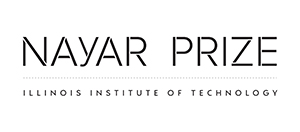An automotive Utopia (“Autopia”) of driverless vehicles may be the key to safer roads, better fuel efficiency, and smoother traffic flow. By moving you at higher speeds, it might even shorten your commute.

But, in order to function optimally, it will also require you to relinquish the steering wheel because, according to transportation scientists, an algorithm is a better driver than you. It’s immune to distraction and, when built into a connected-vehicle system, is designed to make decisions that benefit everyone on the highway.
“Currently people use Google Maps to check roads for traffic and then each driver makes route decisions independently. We want to build a mechanism that collaborates with other connected vehicles on the road and mathematically program a solution that everybody is happy with,” says Lili Du, assistant professor of transportation engineering, who recently received a National Science Foundation CAREER Award to develop algorithms that reduce traffic congestion by coordinating vehicle route choices.
Such collaboration requires autonomous (driverless) vehicles, which will actually follow the software’s directions. That’s because people can choose to ignore instructions, explains Du.

Du is also a member of “The Driverless City” project team, one of three selected to participate in the first phase of Illinois Tech’s Nayar Prize I. As such she is working on algorithms to address decisions about lane choice, vehicle speed, and following distance (the amount of space left between your vehicle and the one in front of you).
“When traffic is congested, we speed up and then we stop. That causes excess emissions and traffic accidents,” Du says. “Our algorithm would help each vehicle react to traffic disturbance or fluctuation properly. As a result, we can keep each vehicle in efficient motion while making the traffic flow more stable.”
Some experts suggest an Autopian future will arrive as early as 2023, but Du says it will largely depend on society’s acceptance of autonomous vehicles. Driverless cars are legal in four states (Nevada, California, Michigan, Florida) and Washington, D.C.; another 20 states (Illinois is one of them) are considering similar laws.
The coming Autopia must also address cybersecurity to prevent hackers from taking over individual vehicles or the entire network, and that issue may take a few years to work out.
Yet an Autopian future will indeed arrive, ironically, by dismissing the driver.